Die Casting Materials
Die casting materials are primarily non-ferrous metals that have good fluidity, mechanical strength, and resistance to wear. The most commonly used materials are aluminum, zinc, magnesium, copper, lead, and tin alloys.
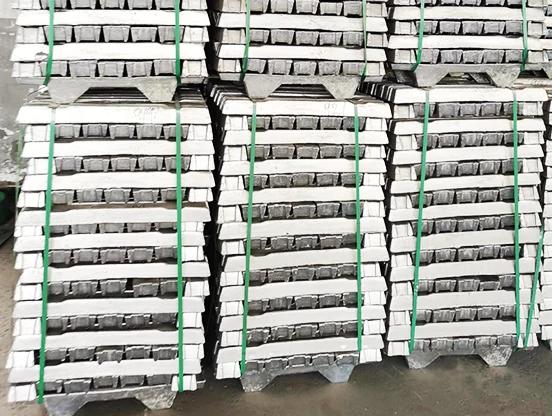
Aluminum alloys
Aluminum alloys are the most commonly used materials in high-pressure die casting (HPDC) due to their lightweight, high strength, good corrosion resistance, and excellent thermal conductivity. Below are the most popular aluminum alloys for HPDC:
| Type | Elongation (% in 50mm) | Tensile Strength (0.2%) | Yield Strength (0.2%) MPa | Impact Strength (J) | Shear Strength (MPa) | Hardness Brinell (HB) | Density (g/cm3) | Melting Point (Average +/- 50) (°C) | Thermal Conductivity (W / m K) | Coefficient of Thermal Expansion (µm/m°K) | Process |
|---|---|---|---|---|---|---|---|---|---|---|---|
| A380 | 3.5 | 324 | 160 | 4 | 190 | 80 | 2.71 | 566 | 96 | 21.8 | Cold Chamber |
| 383 (ADC12) | 3.5 | 310 | 150 | 4 | – | 75 | 2.74 | 549 | 96 | 21.1 | Cold Chamber |
| B390 | 1 | 317 | 250 | – | – | 120 | 2.71 | 580 | 134 | 18.0 | Cold Chamber |
| A413 | 3.5 | 290 | 130 | – | 170 | 80 | 2.66 | 578 | 121 | 21.6 | Cold Chamber |
| 413 | 2.5 | 295 | 145 | – | 170 | 80 | 2.66 | 578 | 113 | 20.4 | Cold Chamber |
| K-Alloy | 5 | 295 | 172 | – | – | 80 | 2.63 | 680 | 113 | – | Cold Chamber |
| A360 | 3.5 | 317 | 170 | – | 180 | 75 | 2.63 | 577 | 113 | 21.0 | Cold Chamber |
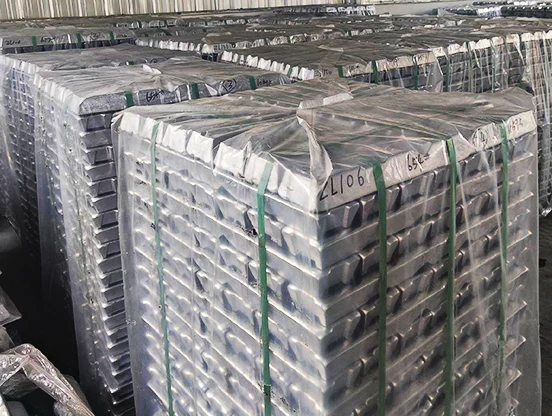
Magnesium alloys
Magnesium alloys are widely used in high-pressure die casting (HPDC) due to their low density, excellent strength-to-weight ratio, and superior damping properties. These alloys are ideal for automotive, aerospace, electronics, and handheld devices where weight reduction is a priority.
| Type | Elongation (% in 50mm) | Tensile Strength (0.2%) | Yield Strength (0.2%) MPa | Impact Strength (J) | Shear Strength (MPa) | Hardness Brinell (HB) | Density (g/cm3) | Melting Point (Average +/- 50) (°C) | Thermal Conductivity (W / m K) | Coefficient of Thermal Expansion (µm/m°K) | Process |
|---|---|---|---|---|---|---|---|---|---|---|---|
| AZ91 | 1-6 | 200-260 | 148 | 6 | 20 | 63 | 1.81 | 533 | 51 | 26 | Hot Chamber |
| AM50 | 5-15 | 180-230 | 125-150 | 18 | 120-140 | 50-65 | 1.77 | 590 ± 50 | 65 | 26 | Cold Chamber |
| AM60 | 4-14 | 190-250 | 130-160 | 17 | 130-150 | 55-70 | 1.8 | 600 ± 50 | 61 | 26 | Cold Chamber |
| AS41 | 2-4 | 200-230 | 130-150 | 4-6 | 110-130 | 70-80 | 1.8 | 615 ± 50 | 85-100 | 27-28 | Cold Chamber |
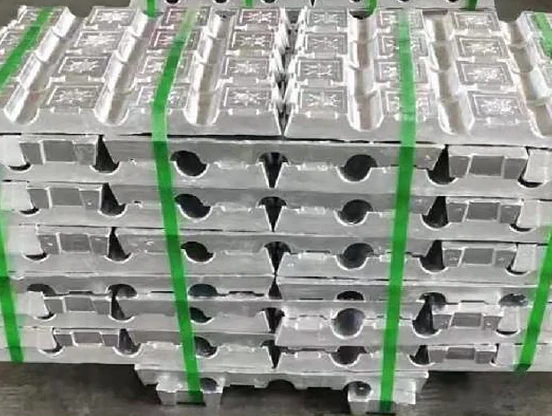
Zinc alloys
Zinc alloys are widely used in high-pressure die casting (HPDC) due to their high strength, excellent wear resistance, dimensional stability, and ability to form intricate shapes with fine details. They also offer good corrosion resistance, low melting points (less energy needed), and long mold life.
| Type | Elongation (% in 50mm) | Tensile Strength (0.2%) | Yield Strength (0.2%) MPa | Impact Strength (J) | Shear Strength (MPa) | Hardness Brinell (HB) | Density (g/cm3) | Melting Point (Average +/- 50) (°C) | Thermal Conductivity (W / m K) | Coefficient of Thermal Expansion (µm/m°K) | Process |
|---|---|---|---|---|---|---|---|---|---|---|---|
| Zamak 2 | 7 | 359 | 283 | 47 | 317 | 100 | 6.60 | 385 | 105 | 27.7 | Hot Chamber |
| Zamak | 10 | 283 | 221 | 58 | 214 | 82 | 6.60 | 384 | 113 | 27.4 | Hot Chamber |
| Zamak 5 | 7 | 328 | 228 | 65 | 262 | 91 | 6.60 | 383 | 109 | 27.4 | Hot Chamber |
| Zamak 7 | 13 | 283 | 221 | 58 | 214 | 80 | 6.60 | 384 | 113 | 27.4 | Hot Chamber |
| ZA 8 | 10 | 374 | 290 | 42 | 275 | 103 | 6.30 | 390 | 115 | 23.3 | Hot Chamber |
| ACuZinc5 | 5 | 407 | 338 | – | – | 115 | 6.85 | 452 | 106 | 24.1 | Hot Chamber |
| EZAC | 6.7 | 414 | 393 | – | - | - | 6.4 | 396 | - | - | Hot Chamber |
| ZA 27 – Zinc Aluminum | 3 | 425 | 376 | 12.8 | 325 | 119 | 5.00 | 431 | 123 | 26.0 | Cold Chamber |
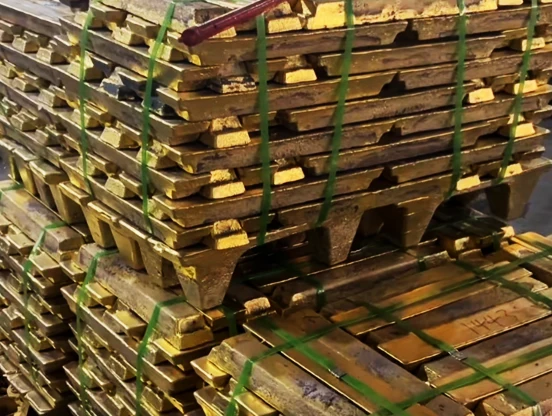
Copper alloys
Copper alloys are used in high-pressure die casting (HPDC) due to their excellent thermal and electrical conductivity, high strength, corrosion resistance, and wear resistance. These alloys are commonly used in electrical, plumbing, marine, automotive, and industrial applications where durability and conductivity are essential.
| Alloy | Composition (Cu-Zn) | Density (g/cm³) | Tensile Strength (MPa) | Yield Strength (MPa) | Hardness (Brinell) | Applications |
|---|---|---|---|---|---|---|
| C85800 (Red Brass) | 85-88% Cu, Zn, Pb, Sn | 8.7 | 250-450 | 90-180 | 75-100 | Plumbing fittings, valves, marine parts |
| C87850 (Silicon Brass) | 81-84% Cu, Zn, Si | 8.4 | 275-400 | 90-150 | 80-110 | Decorative hardware, electrical connectors |
| C95200 (Aluminum Bronze) | 90-94% Cu, Al | 7.7 | 450-600 | 200-350 | 125-175 | Marine components, gears, pump parts |
| C90300 (Tin Bronze) | 86-89% Cu, Sn | 8.8 | 250-500 | 100-200 | 70-110 | Bearings, bushings, valves |
| C17200 (BeCu 25) | 96-98% Cu, Be | 8.3 | 1100-1400 | 950-1200 | 280-400 | Injection molds, welding electrodes, electrical contacts |
| C17510 (BeCu 3) | 97-98% Cu, Be, Co | 8.3 | 700-1000 | 500-800 | 150-250 | Springs, connectors, non-sparking tools |
| C70600 (90/10 Cu-Ni) | 88-90% Cu, Ni | 8.9 | 300-500 | 100-250 | 90-120 | Shipbuilding, heat exchangers, desalination plants |
| C71500 (70/30 Cu-Ni) | 68-70% Cu, Ni | 8.9 | 400-600 | 150-300 | 100-140 | Marine applications, offshore platforms, condenser tubes |
How to Choose?
Selecting the right plastic for high pressure die casting depends on several key factors, including mechanical properties, environmental resistance, and application requirements. Here are some important considerations:
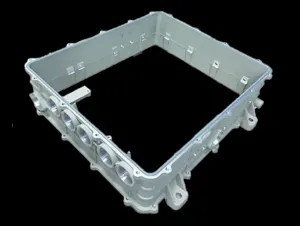
1. Consider the Application Requirements
Ask these questions to determine the best material:
- Strength & Durability – Does the part need to withstand heavy loads or impacts?
- Weight – Should the part be lightweight for fuel efficiency (e.g., automotive, aerospace)?
- Corrosion Resistance – Will the part be exposed to moisture, chemicals, or harsh environments?
- Thermal Resistance – Does it need to withstand high temperatures (e.g., engine components)?
- Electrical Conductivity – Does it require high conductivity (e.g., electronic housings)?
| Material | Advantages | Common Applications |
|---|---|---|
| Aluminum Alloys (e.g., ADC12, A380, A383, A360, AlSi9Cu3) | Lightweight, corrosion-resistant, good strength-to-weight ratio, high thermal conductivity | Automotive, aerospace, consumer electronics, engine parts |
| Magnesium Alloys (e.g., AM50, AM60, AZ91D) | Lightest metal for die casting, good strength-to-weight ratio, good impact resistance | Automotive (steering wheels, dashboards), aerospace, handheld devices |
| Zinc Alloys (e.g., Zamak 3, Zamak 5, ZA-8, ZA-12, ZA-27) | High strength, excellent surface finish, corrosion-resistant, good castability | Precision components, hardware, electronics, decorative parts |
| Copper Alloys (e.g., Brass, Bronze, CuZn, CuAl) | Excellent wear resistance, high strength, good thermal and electrical conductivity | Electrical components, plumbing fittings, industrial machinery |
| Factor | Best Material Choice |
|---|---|
| Lightweight & Fuel Efficiency | Magnesium > Aluminum |
| High Strength & Structural Durability | Aluminum > Copper > Zinc |
| Thin-Wall Castability & Precision | Zinc > Aluminum > Magnesium |
| Corrosion Resistance | Aluminum > Zinc > Magnesium |
| Thermal & Electrical Conductivity | Copper > Aluminum > Zinc |
| Cost Efficiency & Ease of Casting | Zinc > Aluminum > Magnesium > Copper |
